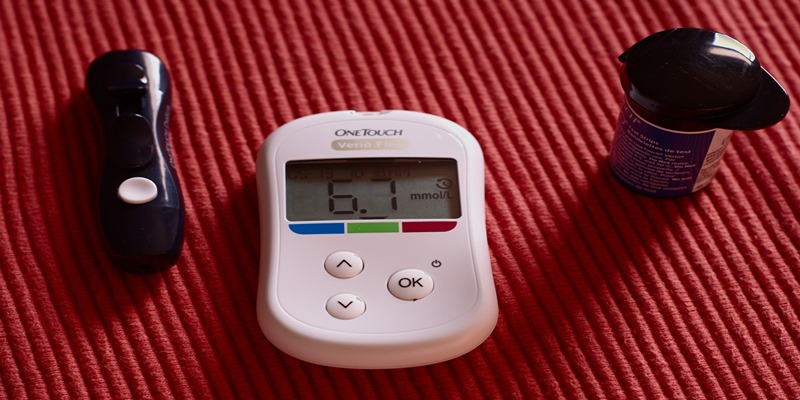Making a habit of walking regularly can lead to several health improvements, including shedding extra pounds. To enhance the effectiveness of walking for fat loss, some strategies include using a weighted vest or choosing routes with inclines. Medical professionals often highlight the link between a sedentary lifestyle and various health issues that could be avoided, such as cardiovascular diseases and excessive weight gain.
For instance, a notable research project demonstrated the impact that regular walking has on reducing body fat and waist size, particularly in overweight women. This study involved participants walking thrice weekly for 50-70 minutes over three months. The results were impressive, with the typical participant losing about 1.5 % of their body fat and cutting nearly an inch off her waist. And although increased physical activity is helpful, there are ways to make walking a more powerful fat burner. Some additions you can make to enhance walking benefits are:
Accelerating Walking Speed
Similar to other aerobic activities like jogging or swimming, the speed at which one walks has a substantial impact. Walking at a faster pace naturally leads to higher calorie consumption. This is confirmed by research published in the journal 'Medicine & Science in Sports and Exercise', which shows that those who switch from walking to jogging tend to burn more calories.
What's more, this study itself discovered that those who jogged regularly tended to be leaner than those fond of walking. This indicates a direct relationship between exercise intensity and calorie burning. However, to reap these walking benefits, switching to running is unnecessary; simply increasing your walking speed can effectively enhance calorie burning and assist in weight management.
Weighted Vest in Your Walk
Carrying additional weight during exercise can lead to higher calorie expenditure. The rationale is straightforward: the more a person weighs, the more energy their body needs to accomplish the same tasks compared to someone lighter. Walking with a weighted vest makes the body exert more effort, enhancing the workout's intensity.
Research has shown that individuals who walk at a moderate pace of 2.5 miles per hour on level ground with a weighted vest, comprising 15% of their body weight, expended 12% more calories than those without a vest. Furthermore, wearing a vest equal to 10% of body weight while walking on a 5-10% incline at the same speed increased calorie burn by an average of 13%.
Interestingly, another study has indicated that using weighted vests doesn't adversely affect how a person walks. In some cases, it might improve their walking pattern. However, caution is advised with weighted vests. It's important to avoid using ankle or wrist weights or carrying handheld weights, as these can lead to muscle imbalances and increase the risk of injuries. Consulting with a healthcare professional is recommended before starting exercises with a weighted vest, especially for those with back or neck issues. For those who can safely use a weighted vest, an enhancement in calorie burning is likely.
Uphill Walking for Calorie Burn

Walking uphill is another effective strategy for increasing calorie expenditure. This can be as simple as adjusting the gradient on a treadmill or incorporating more hills into outdoor walking routes. Ideally, to maximize walking benefits, a person should include uphill walking in their routine two to three times a week.
Paying Attention to Walking Form and Posture
Good form and posture are key components of effective walking. Keeping your gaze forward not only increases your walking speed but also helps in extending your stride. Simultaneously, focusing on engaging your core and glutes can be beneficial. This engagement can be constant or in intervals during your walk. Adopting these techniques builds strength and plays a crucial role in preventing injuries, ensuring you can maintain your walking routine consistently.
Mixing in Resistance Training
Integrating resistance training into your walking routine can significantly boost calorie burning and muscle growth. Simple exercises like squats, push-ups, burpees (or squat thrusts), tricep dips, and lunges at intervals during your walk can elevate your heart rate and enhance muscle tone. These exercises also add variety to your walking routine, keeping it more engaging.
Interval Power Walking
Interval power walking is a dynamic way to enhance calorie burn during your walks. Warm up at a normal pace for 5 to 10 minutes. Do that, and then speed up to just below your limit for 10-15 seconds before returning to normal pace. Repeat these intervals throughout your walk or as long as you can comfortably sustain them. Starting with just 5 minutes of interval work per walk and gradually incorporating longer or more frequent power walking intervals can help you build stamina and effectiveness over time.
Multiple Short Walks Daily
While lengthy walks have advantages, shorter walks taken more frequently throughout the day can be equally beneficial. For many, incorporating several brief walks into their daily routine is more manageable than committing to one long walk. Notably, taking a stroll after each meal offers specific health benefits. Research focusing on sedentary individuals over 60 suggests that three 15-minute walks after meals are more effective in regulating blood sugar levels than a single 45-minute walk.
Setting a Daily Step Goal

Many fitness trackers and pedometers promote a daily target of 10,000 steps, a goal supported by a 2016 study. This translates to about 5 miles of walking. For those using walking to lose weight challenge, consistently hitting or surpassing this 10,000-step mark is advised. Of course, any increase in daily steps contributes to weight loss efforts. Fitness trackers are a great motivational tool, encouraging users to increase their daily step count. Even if reaching 10,000 steps seems daunting, setting and striving for a personal step goal is beneficial. To boost daily step counts, consider:
- Opting for stairs over elevators.
- Parking farther from entrances at shopping centers, workplaces, or schools.
- Walking to destinations like lunch spots, work, or school when feasible.
- Choosing walking breaks at work instead of remaining sedentary during breaks.
Conclusion
Now, you can lose weight by running, as it is an effective tool for weight loss. Consulting a healthcare professional is advisable before incorporating additional weight or intensifying your walking regimen through speed or incline adjustments. The goal should be to increase the frequency and distance of walks. Integrating some intensity into your routine, such as quicker paces or walking on inclines, can also be beneficial a few days a week.




